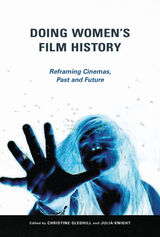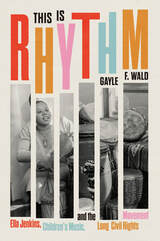4 books about Aveyard, Karina

Doing Women's Film History
Reframing Cinemas, Past and Future
Edited by Christine Gledhill and Julia Knight
University of Illinois Press, 2015
Research into and around women's participation in cinematic history has enjoyed dynamic growth over the past decade. A broadening of scope and interests encompasses not only different kinds of filmmaking--mainstream fiction, experimental, and documentary--but also practices--publicity, journalism, distribution and exhibition--seldom explored in the past. Cutting-edge and inclusive, Doing Women's Film History ventures into topics in the United States and Europe while also moving beyond to explore the influence of women on the cinemas of India, Chile, Turkey, Russia, and Australia. Contributors grapple with historiographic questions that cover film history from the pioneering era to the present day. Yet the writers also address the very mission of practicing scholarship. Essays explore essential issues like identifying women's participation in their cinema cultures, locating previously unconsidered sources of evidence, developing methodologies and analytical concepts to reveal the impact of gender on film production, distribution and reception, and reframing film history to accommodate new questions and approaches. Contributors include: Kay Armatage, Eylem Atakav, Karina Aveyard, Canan Balan, Cécile Chich, Monica Dall'Asta, Eliza Anna Delveroudi, Jane M. Gaines, Christine Gledhill, Julia Knight, Neepa Majumdar, Michele Leigh, Luke McKernan, Debashree Mukherjee, Giuliana Muscio, Katarzyna Paszkiewicz, Rashmi Sawhney, Elizabeth Ramirez Soto, Sarah Street, and Kimberly Tomadjoglou.
[more]

Lure of the Big Screen
Cinema in Rural Australia and the United Kingdom
Karina Aveyard
Intellect Books, 2015
Lure of the Big Screen explores contexts of film exhibition and consumption in rural parts of the UK and Australia, where film theaters are often highly valued as spaces around which isolated communities can gather and interact. Going beyond national borders to highlight transnational stratifications in the rural cinema sphere, this book examines how film theaters in areas of social and economic decline are sustained by resourceful individuals and sub-commercial operating structures. Systematic analysis of cinemas in nonmetropolitan locations has yielded an original five-tiered clustering model through which Karina Aveyard recognizes a range of types between large commercial multiplexes in stable regional centers and their smallest improvised counterparts in remote settlements.
[more]

New Patterns in Global Television Formats
Edited by Karina Aveyard, Albert Moran, and Pia Majbritt Jensen
Intellect Books, 2016
The past twenty years have seen major changes in the ways that television formats and programming are developed and replicated internationally for different markets—with locally focused repackagings of hit reality shows leading the way. But in a sense, that’s not new: TV formats have been being exported for decades, with the approach and methods changing along with changes in broadcast technology, markets, government involvement, and audience interest. This book brings together scholars of TV formats from around the world to analyze and discuss those changes and offer an up-to-the-minute analysis of the current state of TV formats and their use and adaptation worldwide.
[more]

Watching Films
New Perspectives on Movie-Going, Exhibition and Reception
Edited by Albert Moran and Karina Aveyard
Intellect Books, 2013
Whether we stream them on our laptops, enjoy them in theaters, or slide them into DVD players to watch on our TVs, movies are part of what it means to be socially connected in the twenty-first century. Despite its significant role in our lives, the act of watching films remains an area of social activity that is little studied, and thus, little understood.
In Watching Films, an international cast of contributors correct this problem with a comprehensive investigation of movie going, cinema exhibition, and film reception around the world. With a focus on the social, economic, and cultural factors that influence how we watch and think about movies, this volume centers its investigations on four areas of inquiry: Who watches films? Under what circumstances? What consequences and affects follow? And what do these acts of consumption mean? Responding to these questions, the contributors provide both historical perspective and fresh insights about the ways in which new viewing arrangements and technologies influence how films get watched everywhere from Canada to China to Ireland.
A long-overdue consideration of an important topic, Watching Films provides an engrossing overview of how we do just that in our homes and across the globe.
[more]
READERS
Browse our collection.
PUBLISHERS
See BiblioVault's publisher services.
STUDENT SERVICES
Files for college accessibility offices.
UChicago Accessibility Resources
home | accessibility | search | about | contact us
BiblioVault ® 2001 - 2025
The University of Chicago Press









